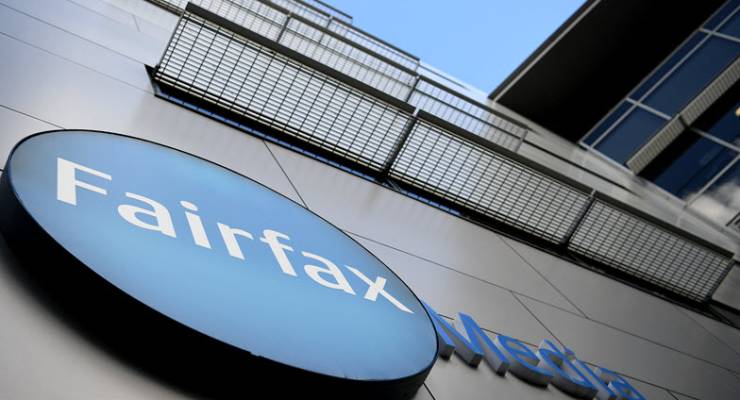
There was just one mention of the Nine deal in CEO Greg Hywood’s commentary in Fairfax Media’s ASX release today: “Fairfax is in good shape — and that’s the reason Fairfax shareholders have the opportunity to benefit … through the proposed combination of our company with Nine Entertainment Co.”
No mention of whether staff should feel the same way though (or readers and subscribers to its papers as well) — especially the journalists in the company’s vulnerable papers, those in the regional and community papers in Australia and the New Zealand papers owned by Stuff.
[First to go? Concerns for Fairfax regional newspapers following Nine acquisition]
Compare Hywood’s restraint to Hywood’s chairman, Nick Falloon, who warmly welcomed the merger idea while wearing his other hat — the executive chairmanship of Domain. Domain, though, is wanted by Nine, along with the 50% of the Stan streaming business Fairfax owns. The 54% of Macquarie Media is another desirable asset. It’s the future of Fairfax’s papers that’s problematic.
Shorn of Domain, Fairfax ended 2017-18 in decent shape: the metro papers are making a bit of money, the regionals and community papers are still struggling, especially with the drought. Stan is just a wonder, as is Macquarie Media (owner of 2GB, 2UE, 3AW). Stuff, in New Zealand, will be cleaned out with 35% of titles bound for closure or merging and more cost cuts coming, judging by the commentary from Hywood.
Net profit was down 12% to $124.9 million but earnings before interest, tax, depreciation and amortisation (EBITDA — a measure favoured by media companies) rose 1.2% to $274.2 million. Dividend was cut from 4 cents a share for 2016-17 to 2.9 cents. But those Fairfax shareholders who are still holding their Domain shares got a total of 8 cents a share, so in reality loyal Fairfax shareholders will get 10.9 cents a share from the two companies and not just 4 cents as they did last year.
The core print business of the company are the metro papers: The Sydney Morning Herald, The Age and The Australian Financial Review. Hywood said EBITDA rose 8.3% with profit margins rising from 9.4% to 10.8%. But that 8.3% rise was sharply lower than the 25.9% rise in 2016-17. Hywood said revenues benefited from higher digital ad revenues in the second half of the year.
Net paid digital subscriptions for the three papers recorded growth year-on-year across all three mastheads. That was up from around 236,000 at the end of June 2017. No breakdown by paper, though. Revenue sank 6.2% to $490.2 million for the metros, which was a smaller drop than the 9% fall in 2016-17.
Revenues in the community papers dipped as well by 6.5% — half the 11.7% drop the year before — but the fall in EBITDA accelerated to 21.6% from 19.2%. Revenues at Stuff fell 9.6% against 3.7% a year ago while EBITDA fell nearly 29% against a 5.1% drop a year ago which helps explain why there are cuts happening across the Tasman.
Stan is the one legacy Hywood can boast about leaving behind at Fairfax that wasn’t there before he joined. So naturally he was effusive. In his commentary this morning Hywood boasted:
Stan has achieved a subscriber base of impressive scale, with more than 1.1 million active subscribers, and is delivering strong active subscriber momentum. In the three month period to July, Stan delivered record quarterly gross and net subscriber additions. Stan’s subscriber growth, combined with the first price increases since launch three years ago, underpinned 72% growth in subscription revenue to reach just under $100 million. The year to June finished with a revenue run-rate of around $120 million. The strength of the operating model is reflected in revenue growth far outpacing the increase in operating costs, driving a 50% reduction in EBITDA losses between Q1 and Q4 FY18.
In other words, Stan is a nice goer and will get better, and soon Hywood will be a goer as well — out the door, leaving behind Fairfax’s core print assets to a very uncertain future.








Apart from one or two exceptions, Stan is a very poor platform with very average offerings .. I subscribe to it .. for now.